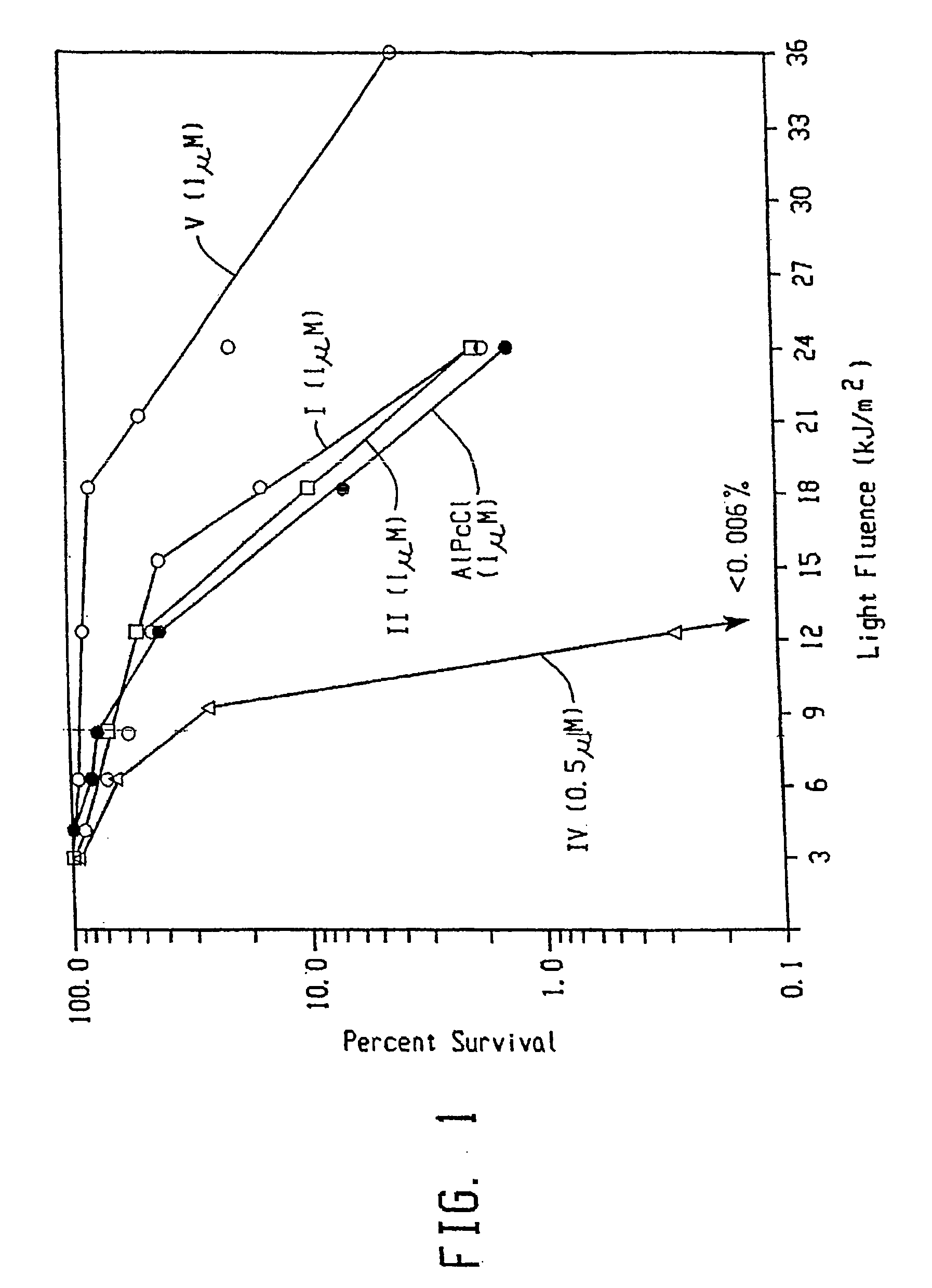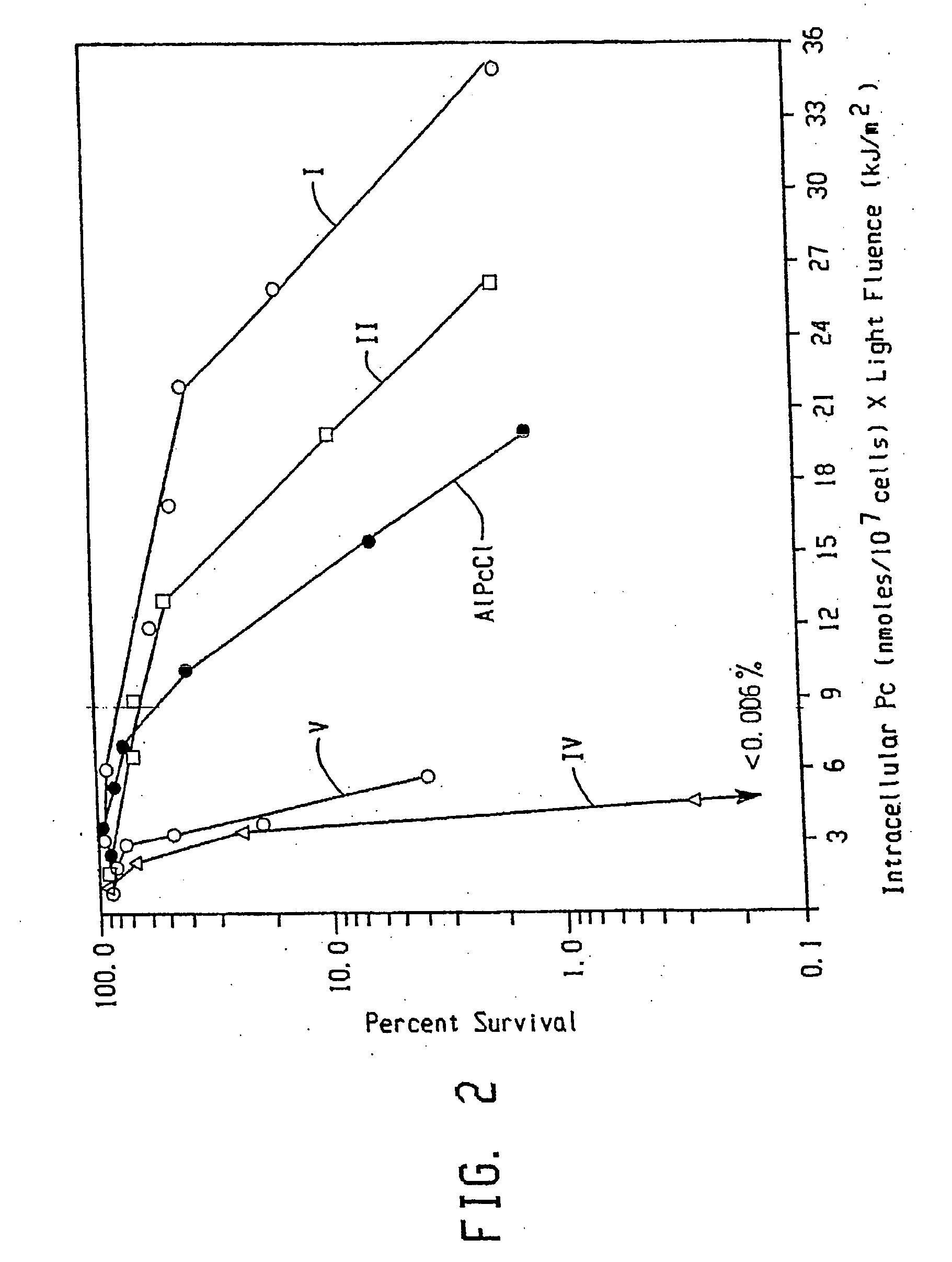Topical delivery of phthalocyanines
a technology of phthalocyanine and phthalocyanine, which is applied in the direction of drug compositions, biocides, heterocyclic compound active ingredients, etc., can solve the problems of disappointing prior studies on phthalocyanine and achieve the effect of preventing unwanted adverse effects
- Summary
- Abstract
- Description
- Claims
- Application Information
AI Technical Summary
Benefits of technology
Problems solved by technology
Method used
Image
Examples
examples
Synthesis of Phthalocyanines
[0107]CH3OSi(CH3)2(CH2)3N(CH3)2—Under argon gas a solution of CH3MgCl in tetrahydrofuran (3.0 M, 45 mL) was added dropwise to a cool (ice bath) solution of (CH3O)3Si(CH2)3N(CH3)2 (11 mL) in tetrahydrofuran (100 mL), and the resulting suspension was stirred for 2 hours while being kept cool (at about 5° C.). Methanol (20 mL) was then added to the suspension and the resulting mixture was filtered, the solid was washed with ether (50 mL) and the washings and filtrate were combined and concentrated on a rotary evaporator (45° C.). The concentrate was fractionally distilled under vacuum (45 torr) and a selected fraction (86-88° C.) was retained (5.0 g, 55%): NMR (CDCl3) δ 3.42 (s, 3H), 2.24 (m, 2H), 2.20 (s, 3H), 1.49 (m, 2H), 0.57 (m, 2H), 0.10 (s, 3H). The compound is a colorless liquid.
[0108]AlPcOSi(CH3)2(CH2)3N(CH3)2—Compound I. A mixture of CH3OSi(CH3)2(CH2)3N(CH3)2 (203 mg) produced above and a suspension of AlPcOH xH2O (56 mg) and 2-ethylpyridine (15 mL...
PUM
| Property | Measurement | Unit |
|---|---|---|
| structure | aaaaa | aaaaa |
| diamagnetic | aaaaa | aaaaa |
| compositions | aaaaa | aaaaa |
Abstract
Description
Claims
Application Information
 Login to View More
Login to View More - R&D
- Intellectual Property
- Life Sciences
- Materials
- Tech Scout
- Unparalleled Data Quality
- Higher Quality Content
- 60% Fewer Hallucinations
Browse by: Latest US Patents, China's latest patents, Technical Efficacy Thesaurus, Application Domain, Technology Topic, Popular Technical Reports.
© 2025 PatSnap. All rights reserved.Legal|Privacy policy|Modern Slavery Act Transparency Statement|Sitemap|About US| Contact US: help@patsnap.com



